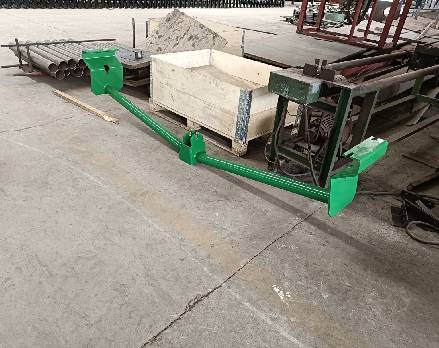 Afrikaans
Afrikaans  Albanian
Albanian  Amharic
Amharic  Arabic
Arabic  Armenian
Armenian  Azerbaijani
Azerbaijani  Basque
Basque  Belarusian
Belarusian  Bengali
Bengali  Bosnian
Bosnian  Bulgarian
Bulgarian  Catalan
Catalan  Cebuano
Cebuano  Corsican
Corsican  Croatian
Croatian  Czech
Czech  Danish
Danish  Dutch
Dutch  English
English  Esperanto
Esperanto  Estonian
Estonian  Finnish
Finnish  French
French  Frisian
Frisian  Galician
Galician  Georgian
Georgian  German
German  Greek
Greek  Gujarati
Gujarati  Haitian Creole
Haitian Creole  hausa
hausa  hawaiian
hawaiian  Hebrew
Hebrew  Hindi
Hindi  Miao
Miao  Hungarian
Hungarian  Icelandic
Icelandic  igbo
igbo  Indonesian
Indonesian  irish
irish  Italian
Italian  Japanese
Japanese  Javanese
Javanese  Kannada
Kannada  kazakh
kazakh  Khmer
Khmer  Rwandese
Rwandese  Korean
Korean  Kurdish
Kurdish  Kyrgyz
Kyrgyz  Lao
Lao  Latin
Latin  Latvian
Latvian  Lithuanian
Lithuanian  Luxembourgish
Luxembourgish  Macedonian
Macedonian  Malgashi
Malgashi  Malay
Malay  Malayalam
Malayalam  Maltese
Maltese  Maori
Maori  Marathi
Marathi  Mongolian
Mongolian  Myanmar
Myanmar  Nepali
Nepali  Norwegian
Norwegian  Norwegian
Norwegian  Occitan
Occitan  Pashto
Pashto  Persian
Persian  Polish
Polish  Portuguese
Portuguese  Punjabi
Punjabi  Romanian
Romanian  Russian
Russian  Samoan
Samoan  Scottish Gaelic
Scottish Gaelic  Serbian
Serbian  Sesotho
Sesotho  Shona
Shona  Sindhi
Sindhi  Sinhala
Sinhala  Slovak
Slovak  Slovenian
Slovenian  Somali
Somali  Spanish
Spanish  Sundanese
Sundanese  Swahili
Swahili  Swedish
Swedish  Tagalog
Tagalog  Tajik
Tajik  Tamil
Tamil  Tatar
Tatar  Telugu
Telugu  Thai
Thai  Turkish
Turkish  Turkmen
Turkmen  Ukrainian
Ukrainian  Urdu
Urdu  Uighur
Uighur  Uzbek
Uzbek  Vietnamese
Vietnamese  Welsh
Welsh  Bantu
Bantu  Yiddish
Yiddish  Yoruba
Yoruba  Zulu
Zulu conveyor belt pulley
Understanding Conveyor Belt Pulleys The Heart of Material Handling Systems
Conveyor belt systems are an essential component in a variety of industries, facilitating the efficient movement of goods and materials. At the core of these systems are conveyor belt pulleys, which play a crucial role in the functioning of the entire setup. This article delves into the significance, types, and applications of conveyor belt pulleys.
What Are Conveyor Belt Pulleys?
Conveyor belt pulleys are cylindrical components that guide and support conveyor belts. They are typically installed at either end of the conveyor system and serve multiple purposes, including tensioning the belt, driving it, and redirecting the flow of materials along the conveyor path. The effective operation of a conveyor belt system relies heavily on the correct selection and maintenance of pulleys.
Types of Conveyor Belt Pulleys
Pulleys come in various types, each designed for specific functions within the conveyor system
1. Drive Pulleys These pulleys are attached to the motor and are responsible for driving the belt forward. They provide the necessary traction and are often coupled with lagging, a protective covering that extends their life and improves grip.
2. Idler Pulleys Idler pulleys do not drive the conveyor belt but support it as it moves. They help maintain the tension in the system and are critical for ensuring smooth operation. Various configurations of idler pulleys exist, including troughing, return, and impact idlers, each designed for different applications.
3. Tail Pulleys Located at the end of the conveyor system, tail pulleys are used to change the direction of the belt as well as act as a tensioning element in certain setups.
4. Take-up Pulleys These pulleys help in adjusting the tension of the conveyor belt. They are essential for ensuring that the belt operates at the correct tension, reducing the risk of slippage or wear.
conveyor belt pulley

5. Snub Pulleys Snub pulleys are used to increase the angle of wrap of the conveyor belt around the drive pulley. This enhances friction and, as a result, improves the overall efficiency of the belt drive.
Applications of Conveyor Belt Pulleys
Conveyor belt pulleys find applications in various industries, including
- Manufacturing In factories, pulleys are used to transport materials between different stages of production, significantly enhancing efficiency and productivity.
- Mining Pulleys are integral to the transportation of mined materials, often operating in harsh environments and under heavy loads.
- Food Processing In food manufacturing, hygiene is paramount. Conveyor systems equipped with appropriate pulleys ensure the safe and efficient movement of products while adhering to safety standards.
- Logistics and Warehousing Pulleys in conveyor systems streamline the sorting and distribution processes, helping to manage the flow of goods from receiving to shipping efficiently.
Maintenance and Best Practices
Proper maintenance of conveyor belt pulleys is critical to ensure their longevity and efficiency. Regular inspections should be conducted to check for wear and tear, proper alignment, and tension levels. Lubrication of moving parts, particularly bearings, is essential to minimize friction and prevent overheating.
In conclusion, conveyor belt pulleys are vital elements in the machinery of various industries, ensuring the smooth and efficient transportation of materials. Understanding their functions and applications can lead to better maintenance practices and improved operational efficiency. As industries continue to evolve, so will the designs and technologies of conveyor belt pulleys, further enhancing their role in material handling systems.
-
Revolutionizing Conveyor Reliability with Advanced Rubber Lagging PulleysNewsJul.22,2025
-
Powering Precision and Durability with Expert Manufacturers of Conveyor ComponentsNewsJul.22,2025
-
Optimizing Conveyor Systems with Advanced Conveyor AccessoriesNewsJul.22,2025
-
Maximize Conveyor Efficiency with Quality Conveyor Idler PulleysNewsJul.22,2025
-
Future-Proof Your Conveyor System with High-Performance Polyurethane RollerNewsJul.22,2025
-
Driving Efficiency Forward with Quality Idlers and RollersNewsJul.22,2025





























